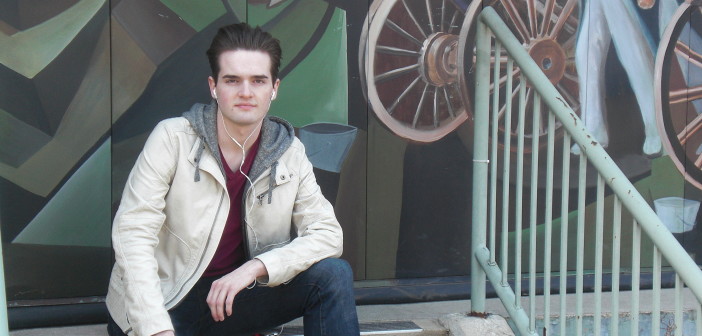When comparing the recent wild antics of a pop star like Justin Bieber to the ways of the iconic Elvis Presley, one may wonder how much more amped up the personas of these contemporary models of masculinity are for today’s youth.
Political scientist and North Central College professor, Stephen Caliendo commented on the impact of the shift in musical experience propelled by personas making bolder statements on and offstage. “The sounds accompanying the lyrics that today’s youth listen to have a flavor of rock ‘n’ roll. It is not necessarily the rock genre that is found to be sexy.”
As far as music’s appeal, Caliendo said, rock ‘n’ roll is a favorite among the youth for its ability to elicit freedom but also angst. As commonly expressed by many young people, it is their job to question everything—from parents to authority figures. They push boundaries—by upsetting the order and trying new things. They’re coming of age—driving, working and furthering their education.
In testing limits, psychology professor Leila Azarbad said the perceptions of a music star’s messages in media are sometimes problematic for the youth who are mimicking or modeling a persona.
Along with media and perceptions, the youth’s social media habits establish that “Frequent Internet use is the norm among teenagers ages 12-17 in the U.S. Some 21 million teens (those ages 12-17) use the internet and half of them use the internet daily and another third use it once a week or more,” according to pewinternet.org. If we examine Justin Bieber and his fascination with selfies and the internet, some may argue that mimicking or modeling themselves after him makes for a vain, egotistical or self-absorbed person.
According to Azarbad, critics may often deny that musicians ever sign up to be role models. She said the idea of being a role model must be taken responsibly.
As for the idea of responsibility, Caliendo said that regardless of age, everyone is susceptible to mimic what is heard.
Sociology professor Juan Martinez added that because of music, among other forms of socialization, development continues beyond age 18. He explained that sometimes the assumption is that adults resolve their problems in more concrete ways.
According to Carl Pickhardt of Psychology Today’s “Adolescence Individuality,” parents can sometimes be “shortsighted” and stubborn in how they look to assert their authority based on their beliefs and values.
Even so, the personas in the media that are focused on, more times than not, tend to be the most exciting ones. For this reason, some young men are more often basing their masculinity on negative role models.
Azarbad said, “I don’t think you have to be negative and in your face to have an effect. I think the positive ones can too. I think that if we expose them just as much or more to the positive than negative, we can make that much more of a difference.”
With the display of positive and negative personas, Martinez said, “sex sells.”
He added that along with provocativeness in music, there’s talk about liberalizing sexual norms. Provocativeness exists in commercials, advertising, music and all other forms of media too.
On Instagram recently, Justin Bieber posted a selfie that draws strong ties to American actor James Dean and his iconic photograph where he sucks on a cigarette while looking off into the distance.
In Miley Cyrus’s performance at the 2013 MTV Video Music Awards, audiences found her sticking her tongue out and twerking by Robin Thicke.
Both Bieber and Cyrus serve as models for the youth, who increasingly looking for ways to redefine traditional gender roles and identity.
The music enjoyed by the youth often times represents how their identity is defined. The music that the youth listen to sometimes offers commentary on norms concerning self-expression.
Caliendo criticized Thicke’s “Blurred Lines” and said music may “cement in us these roles about what men should do when they feel sexual attraction and about what women should do when they feel sexual attraction. This is all so dangerous.”
Even so, “Blurred Lines” pushes buttons and creates a sense of space in history because of the different ways people perceive the song. The show was viewed by many and resulted in a 66% ratings boost from last year and set a record in social media interaction, according to mediabistro.com.
In response to arguments presented by bold musical acts declaring a right to freedom of expression, Azarbad added that lyrics, like art, allow for listener interpretation. Defining restrictions to interpretation can be difficult.
Whether the song is about date rape or the liberalization of women, the discussion of the themes relating to identity development and music are landmark in its reach. For an increasingly media-oriented youth, the role of parents in the conversation about what makes for a good or bad role model is essential. This conversation may start at home, but looking forward also speaks for the good of society.

